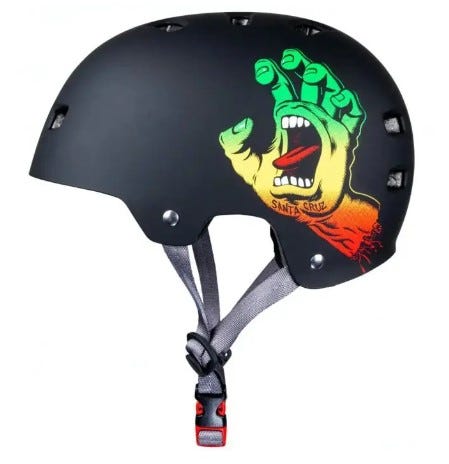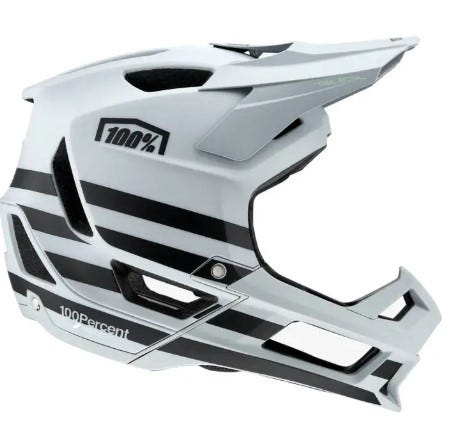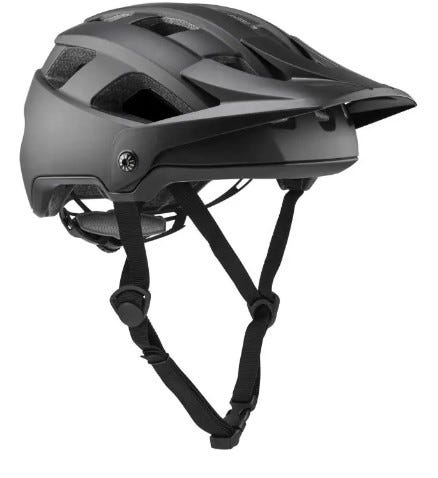How to properly fit and adjust your helmet to ensure maximum protection and comfort [2023 Adult Helmet Guide]
Whether you're cycling, skating, skateboarding, scootering, or participating in any other outdoor activity, wearing a helmet is one of the most important safety measures you can take. However, simply putting on a helmet is not enough. For optimal protection, it's crucial to ensure that your adult helmet fits properly and is adjusted correctly.
A helmet that is too loose or too tight can compromise its protective capabilities and an ill-fitting helmet can cause discomfort or distraction during activity, potentially leading to accidents. The good news is that fitting and adjusting your helmet is a simple process that can make all the difference in keeping you safe during outdoor activities.
In this article, we will provide you with a comprehensive guide for adults on how to properly fit and adjust your helmet to ensure maximum protection and comfort. We'll walk you through each step of the process, from choosing the right size to checking for proper positioning and testing the fit. We'll also provide you with some tips for maintaining your helmet to ensure its effectiveness in protecting your head.
By following the steps outlined in this article, you can ensure that your helmet fits properly and provides you with the protection you need to enjoy your outdoor activities safely.
Step 1: Choose the right size
Choosing the right size adult helmet is the most important step in ensuring your helmet fits correctly. When it comes to helmet sizes, one size does not fit all, and different manufacturers may have slightly different sizing charts. It's essential to measure your head accurately to ensure you get the correct size.
To measure your head, use a flexible tape measure and wrap it around the circumference of your head, just above your eyebrows and ears. Make sure the tape measure is level and snug but not too tight. Take note of the measurement and refer to the sizing chart provided by the helmet manufacturer to determine the appropriate helmet size for you.
It's important to keep in mind that helmets should fit snugly but not be too tight. A helmet that is too tight can cause discomfort and headaches, while a loose helmet can move around during impact, reducing its effectiveness in protecting your head. So, make sure to measure your head carefully and refer to the manufacturer's sizing chart to select the right helmet size for you.
Step 2: Adjust the straps
After selecting the correct adult helmet size, the next step is to adjust the straps for a secure fit. It's essential to get the straps adjusted correctly to ensure the helmet stays in place during impact and provides maximum protection.
Start by adjusting the chin strap to ensure it sits comfortably under your chin. The chin strap should be snug but not too tight, and you should be able to fit one finger between the strap and your chin. Next, adjust the side straps to form a V-shape that sits just below your ears. This ensures that the helmet stays in place during impact and doesn't move around on your head.
It's important to make sure the straps are not too loose or too tight. Loose straps can cause the helmet to move around on your head, while tight straps can cause discomfort and even pain. Take your time to adjust the straps carefully and test the fit by moving your head from side to side and up and down. If the helmet moves, adjust the straps until you get a snug and secure fit.
Remember, helmets should fit snugly and comfortably, and the straps play a crucial role in achieving this. So, take the time to adjust the straps correctly and ensure the helmet stays in place during impact.

Step 3: Adjust the fit
Adjusting the fit of your helmet is essential to ensure maximum comfort and protection. If your helmet doesn't fit properly, it can move around on your head during impact, reducing its effectiveness in protecting your head.
Start by placing the helmet on your head and making sure it sits level on your head, covering your forehead without obstructing your vision. The back of the helmet should be snug against the back of your head, and the sides should sit just above your ears. Use the dial or similar mechanism to adjust the fit to your head shape. If your helmet doesn't have this feature, you can add foam pads to adjust the fit.
It's essential to make sure the helmet is snug but not too tight. If the helmet is too tight, it can cause discomfort and headaches, while a loose helmet can move around on your head during impact. Shake your head to test the fit and ensure the helmet stays in place.
Remember, adult helmets should fit snugly and comfortably to ensure maximum protection. Take the time to adjust the fit of your helmet, so it sits securely on your head and doesn't move around during impact.
Step 4: Check for proper positioning
Checking for proper positioning is the last step in ensuring that your helmet is properly fitted and adjusted. It's important to make sure that the helmet is positioned correctly on your head to provide maximum protection and comfort.
First, check to see if the helmet is level on your head. It should not be tilted back or forward, but rather sitting straight and level. If the helmet is not level, adjust the fit or straps until it sits correctly.
Next, check to see if the helmet covers your forehead without obstructing your vision. You should be able to see straight ahead and have a clear peripheral vision. If the helmet obstructs your vision, adjust the fit or positioning until it doesn't.
It's also important to ensure that the helmet is not tilted to one side or the other. If the helmet is tilted, it can reduce its effectiveness in protecting your head during an impact. Adjust the fit or straps until the helmet sits straight and level.
Remember, the proper positioning of your helmet is essential to ensure maximum protection and comfort. Take the time to check for proper positioning and make any necessary adjustments to ensure that the helmet sits correctly on your head.

Step 5: Test the fit
Testing the fit of your helmet is the final step in ensuring that it's secure and comfortable. It's important to test the fit to ensure that the helmet doesn't move or slide around during an impact.
Shake your head side-to-side and up-and-down to test the helmet's stability. It should remain snug and in place without any wobbling or sliding around. If the helmet moves, adjust the fit or straps until it's secure.
You should also check for pressure points or discomfort. A poorly fitting helmet can cause discomfort or even pain, so it's important to address any issues. If the helmet feels uncomfortable or causes any pain, try adjusting the fit or pads until it's comfortable.
It's important to note that helmets should be replaced after any significant impact or after a certain amount of time, as recommended by the manufacturer. Even with a proper fit, the effectiveness of a helmet can decrease over time due to wear and tear.
Overall, testing the fit of your helmet is an important step in ensuring maximum protection and comfort. Take the time to test the fit and make any necessary adjustments to ensure that your helmet is secure and comfortable.
Step 6: Maintenance
Proper maintenance is critical in ensuring the longevity and effectiveness of your adult helmet. A well-maintained helmet will be better equipped to protect your head in case of an impact. Here are some tips for maintaining your helmet:
Regularly clean your helmet using mild soap and water. This will help remove any dirt or debris that may have accumulated on the helmet's surface. Avoid using harsh chemicals or solvents, as these can damage the helmet's materials and decrease its effectiveness.
Store your adult helmet in a cool, dry place away from direct sunlight or heat sources. Exposure to high temperatures can cause the materials in your helmet to deteriorate, which can compromise its effectiveness in protecting your head.
Avoid dropping or hitting your helmet, as this can damage the helmet's protective properties. Even a small crack or dent can compromise the helmet's effectiveness in protecting your head, so it's important to handle it with care.
Replace your helmet after any impact, even if it appears undamaged. The foam inside the helmet can be compressed and may not provide adequate protection in a subsequent impact. It's also recommended that you replace your helmet every few years, even if it hasn't been in an accident. Over time, the materials in your helmet can deteriorate, which can decrease its effectiveness in protecting your head.
By following these tips for maintaining your helmet, you can help ensure that it remains effective in protecting your head in case of an impact. Remember that a properly fitted and maintained helmet is an essential piece of safety equipment for any activity that involves the risk of head injury.
Wearing a helmet, whether it is a standard adult helmet or a BMX helmet, is a simple yet effective way to reduce the risk of head injuries while participating in outdoor activities. However, simply wearing a helmet is not enough. It's crucial to ensure that the helmet is properly fitted and adjusted to provide maximum protection and comfort. A poorly fitted helmet can be just as dangerous as not wearing a helmet at all, as it may shift or come off during impact. By following the steps outlined in this article, you can ensure that your helmet fits properly and provides the protection you need. Remember, protecting your head is essential, and a properly fitted and maintained helmet can make all the difference in preventing head injury.


At SkateHut, we have a range of adult helmets for all sorts of sports, including mountain bike helmets, skate and BMX helmets.

